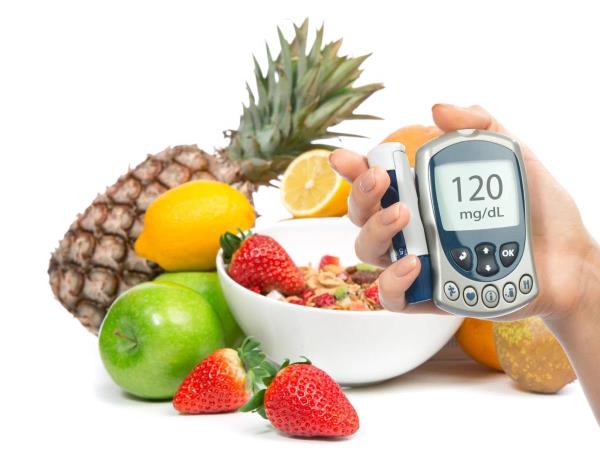Obesity is so closely linked to diabetes that they could be seen as two sides of the same coin.
Type 2 Diabetes: The Silent Epidemic of Our Time
More than 90% of all people with diabetes have type 2. According to health data from 2023, there were a staggering 537 million people worldwide with diabetes (IDF Diabetes Atlas, 10th edition). It's horrifying that most people don't even know they have it because the first symptoms are so subtle. For years, diabetes can quietly consume the body from within without being detected. Increased thirst, frequent urination, and increased appetite are typical signs, but they often only appear once complications are already present.
And the complications? They are not harmless – we're talking about eye damage (retinopathy), kidney damage, nerve-related leg pain (neuropathy), as well as heart attacks, strokes, and circulation problems.
When Obesity Is Not Just About Looks But a Serious Health Risk
In traditional medicine, people have always known that the body is trying to communicate something when excess weight starts to accumulate. It's not just a matter of appearance but a sign that something in the body is not functioning properly. And one of these issues is insulin resistance. This is a condition where cells in the body no longer respond to insulin – the hormone that regulates blood sugar – as they should.
To put it simply: if insulin is the key that unlocks the cell door to let sugar in, then in insulin resistance, the key no longer works. The door remains locked, and sugar circulates in the blood. The body then produces more insulin, causing fat to accumulate, especially around the abdomen. And here begins a vicious cycle that is difficult to escape without lifestyle changes.
Traditional Practices and Modern Science Hand in Hand
In the past, when diabetes was noticed – as they used to say if ants were attracted to a patient's urine – the first step was to adjust the diet. They would give up baking and sweet dishes, eat more sour soups, legumes, and vegetables. Today, we know that we need to go a step further.
Modern science has confirmed that a diet rich in fiber and with a low glycemic index has been proven to help. In a study published in The Lancet (2022), it was found that a diet with less than 50 grams of carbohydrates per day lowered glucose levels in over 60% of patients within two weeks.
Adding 30 minutes of daily exercise – whether it's walking, gardening, or dancing – further multiplies the effects. One study by the American Diabetes Association (ADA) showed that even moderate physical activity reduces the risk of developing type 2 diabetes by more than 58%. This also applies to those with so-called prediabetes, a condition where sugar levels are rising but not yet at the level of a full-blown illness.
Let Food Heal, Not Hurt
We often hear: You must diet. But that scares people. Diet sounds like punishment. We prefer to say: Change your relationship with food. The body prefers order, not chaos. Instead of eating three large meals a day, divide your food into five smaller meals. Start your day with oatmeal (without sugar!), add cinnamon (a natural sugar regulator), have a handful of walnuts and a glass of sour milk in between, for lunch, have bean soup with a salad, and in the evening, enjoy vegetable patties.
Watch out for the white trio: white bread, white sugar, and white rice. Replace them with buckwheat porridge, brown rice, whole grain pasta, and unprocessed fruits. A Harvard study showed that swapping white foods for whole grains reduces the risk of type 2 diabetes by as much as 35%.
Natural Remedies from the Home Pharmacy
In traditional medicine, we use many things that science now confirms. Cinnamon, as mentioned, lowers sugar levels. Psyllium husk (Plantago psyllium) helps regulate glucose levels and aids digestion. Turmeric reduces inflammation commonly associated with diabetes.
Another interesting example: nettle. In folk terms, it is often said to purify the blood. Scientists have discovered that nettle contains compounds that can affect sugar metabolism and have a mild effect on lowering blood sugar.
Even apple cider vinegar – a teaspoon in a glass of water before a meal – can help reduce the spike in blood sugar after a carbohydrate-rich meal. In a 2015 study, researchers found that vinegar reduces the glycemic response by up to 31% when consumed before a meal rich in carbohydrates.
What about weight loss medications?
Modern pharmacology also offers some solutions. In recent years, medications have been introduced to the market that not only regulate sugar but also help with weight loss. For example, medications that mimic the hormone GLP-1, which promotes a feeling of fullness. Among these, the most well-known is liraglutide, which, with regular use, helps lose up to 8% of body weight in a few months.
It's important not to take medications on your own. Every step should be monitored by a doctor, preferably a diabetologist. Why? Because some medications are potent and can also affect the functioning of the heart, kidneys, and other organs. However, in combination with dietary changes and increased exercise, they can be effective aid.
What about when diabetes strikes during pregnancy?
There is also gestational diabetes – diabetes that occurs during pregnancy. It is not rare. It affects 6 to 10% of all pregnant women. It most commonly occurs in those with a higher body mass index (BMI over 30). Here, it is extremely important to adapt both diet and exercise immediately, as high blood sugar can affect the fetus and increase the risk of complications during childbirth.
The Solution Lies in Consistency, Not Miraculous Pills
Treating diabetes is not a sprint but a marathon. It's not about eating healthy for one week and then indulging in sweets the next. The body remembers every day. Continuity is the miraculous ingredient that brings results.
In a study conducted at the University of Cambridge, it was found that type 2 diabetes in over 40% of patients can be completely reversed by losing 10% of body weight and adhering to a healthy lifestyle for at least a year.
What Can You Do Today?
Perhaps the most valuable advice is this: don't wait for Monday or the new year. Every day counts. Reduce your portion size at your next meal. Take a walk after lunch. Drink water instead of juice. Slowly but steadily, you will become your own doctor.
And remember: don't be afraid to seek support. A conversation with a dietitian, therapist, or even a family member can make a big difference. Sometimes, just having someone believe in you before you do can be immensely helpful.
Datum: 13. JUN 25 - GOOD TO KNOW
How to lose excess weight with diabetes?
When diagnosed with diabetes, doctors advise: lower blood sugar, watch your diet, exercise more. However, that is not nearly enough...
(FW)
 Would you like to be informed about news on the website?
Would you like to be informed about news on the website?
Just enter your e-mail
Lose excess weight with diabetes
Type 2 diabetes complications
Fiber-rich diet for diabetes
Natural remedies for diabetes
Weight loss medications for diabetes
|
Copyright (c) Foodwhisper.com March 2018 |
π | Contact: info@foodwhisper.com |
About us | Facebook |  |









